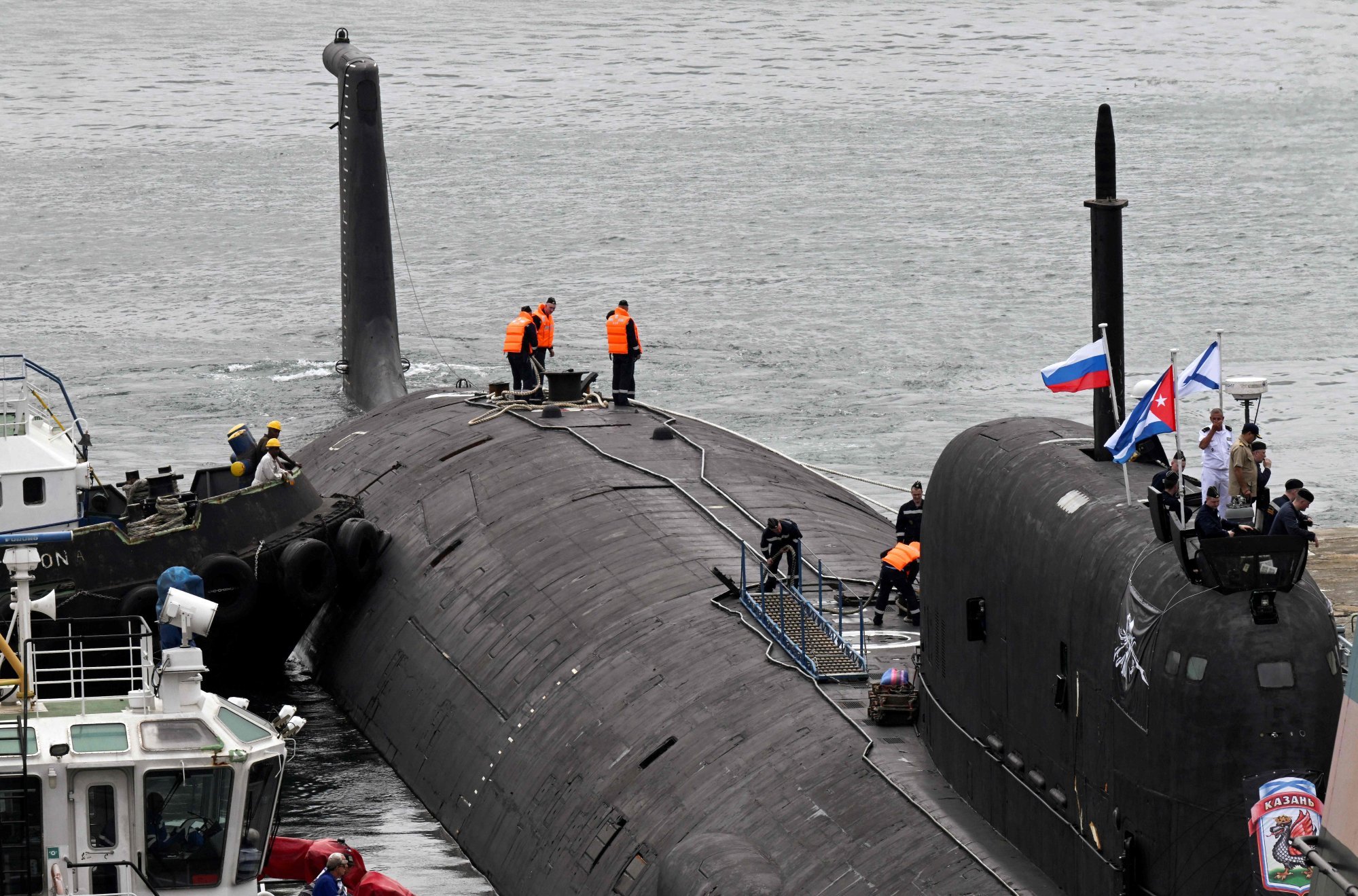Just last month, the head of the US Northern Command warned Congress that Moscow could soon deploy 12 similarly advanced nuclear submarines split evenly between the Pacific and Atlantic, creating a “persistent conventional threat” to the United States.
“The threat will only become more acute later in the decade,” US Air Force General Gregory Guillot said, once the Yasen-class submarines are regularly armed with hypersonic missiles capable of travelling many times the speed of sound.
US officials are now assessing whether the current Russian deployment, which will culminate in military exercises in the Caribbean, could be the beginning of a pattern of Russian submarine activity that will require a more sustained change in US force posture.
The Kazan, a Yasen-class sub, joined three other Russian combat vessels that US officials characterised as routine visitors to Cuba’s shores.
The deployment is “something we watch closely, carefully,” Sullivan said.
As the Kazan breached the waters of the port of Havana on Wednesday, Russian state media reported that the vessel had demonstrated it is “capable of quietly approaching US shores” within 50km. US officials acknowledged on Tuesday that the Russian fleet had skirted the coast of Florida by a similar distance on its approach to Cuba.
“If she wants to hide, they will definitely lose her, she will break away,” said Mikhail Budnichenko, director of the submarine programme, as quoted by Tass, a Russian state-run media organisation. “This is a very secretive ship, this is the latest achievement of Russian science and technology.”

The Kazan, a nuclear-powered vessel capable of carrying and firing nuclear cruise missiles, is a state-of-the-art submersible that is part of a newly designed fleet intended to replace Russia’s aging Soviet-era nuclear submarines.
A US official said that US military assets never lost track of the Kazan on its approach to Havana. The US Northern Command had dispatched three guided-missile destroyers – the USS Truxtun, USS Donald Cook and USS Delbert D. Black – as well as a US Coast Guard cutter and a Boeing P-8 maritime patrol aircraft to patrol the Russian military movements.
But Moscow’s advancements in submarine technology have accelerated in recent years. Last year, Guillot’s predecessor warned Congress that Yasen-class submarines like the Kazan could begin routinely patrolling US coasts this year or next.
The threat “is absolutely increasing,” General Glen VanHerck told lawmakers, referring to the Russian submarine deployments, “now not only the Atlantic, but we also have them in the Pacific”.
“It’s just a matter of time – probably a year or two – before that’s a persistent threat, 24 hours a day,” VanHerck added. “That impact has reduced decision space for a national senior leader in a time of crisis.”
Last month, Guillot told the Senate that Moscow’s intent to deploy a dozen submarines across the Pacific and Atlantic would enable the Russian Navy “to pose a persistent conventional threat to critical infrastructure throughout most of North America”.

“The threat will only become more acute later in the decade when [Russian submarines] are armed with the Tsirkon hypersonic missile,” Guillot said.
US officials said that the Kazan is not known to be carrying hypersonic missiles on its current deployment.
But Tass quoted another unnamed Russian official on Wednesday stating the Kazan and its escorts could be equipped with such powerful weapons that a close approach to the US coast would not even be necessary.
A sub wouldn’t need to come as close as 50km to the US shore, Tass quoted the official as saying: “but in principle, it can”.
During the Cold War, Cuba was an important client state for the Soviet Union. The deployment of Soviet nuclear missile sites on the island triggered the Cuban Missile Crisis of 1962, when Washington and Moscow came close to war.
Russia has strengthened its military alliance with Cuba in recent years, with high-ranking military and intelligence officials making frequent visits to Havana. For many years, Russia operated a spy base near Havana in Lourdes, but the facility was dismantled in the early 2000s.
While the Russian ships were entering Cuban waters Wednesday morning, Cuban Foreign Minister Bruno Rodriguez was meeting his Russian counterpart, Sergey Lavrov, in Moscow. The two men vowed to continue supporting each other’s agenda but did not mention the ships’ arrival in Havana.
Additional reporting by Agence France-Presse

